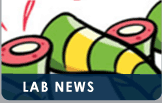General Research Interests
My interdisciplinary research in ecological and evolutionary biomechanics focuses on the intricate relationships between the environment and animal function, from habitat micro/nano structure to changes in ambient temperature and light. My approach integrates across innovative measurements of animal and habitat structure (confocal microscopy, microCT, and SEM), animal movement in nature (high-speed video and animal-borne accelerometry), physiology and mechanics of motion (high-speed video, force plates, and in vivo muscle recordings), habitat replication (two-photon polymerization lithography and replicas of surfaces using two-step molding process), machine learning and ecomechanical modeling. I place these results in an evolutionary framework, using advanced phylogenetic comparative methods. I use a variety of vertebrate groups, including geckos, snakes, small mammals, birds, and fishes. We utilize museum collections across the world, including those at the Museum Koenig (Bonn, Germany), the LA County Museum, the California Academy of Sciences, and others. Our fieldwork is conducted in a number of places, including the Bamfield Marine Sciences Centre in British Columbia, Gobabeb Research & Training Centre in Namibia, Nouragues in French Guiana, and various places in the USA and Canada
Experimental and Field Techniques
- Accelerometry in nature: We use tri-axial accelerometers attached to snakes, kangaroo rats, and lizards. This allows us to distinguish behaviors continuously in nature, including locomotion, prey capture, swallowing, and remaining still. We combine this with machine learning algorithms that can "learn" the behavioral signals from the immense amount of data that we obtain.
- High-speed videography: We use a variety of high-speed cameras (Edgertronic, Phantom, Photron) to quantify three-dimensional movements during locomotion and prey capture in both the lab and the field.
- Scanning Electron Microscopy and 3D analyses (SEM): This technique allows allows us to quantify the microtopography of both gecko adhesive surfaces and the surfaces on which they move. We then use the SEM module in the MountainsMap software package to quantify the 3D surface topography from multiple SEM images.
- Electromyography (EMG): This technique allows one to measure the electrical activity in a muscle using indwelling electrodes. I use this to quantify the intensity and timing of activation patterns during dynamic locomotion
- Sonomicrometry: This technique utilizes ultrasonic pulses between piezoelectric crystals to measure distances in real time. For example, I implant these into muscles to measure the changes in length along a fascicle.
- Aurora in situ/in vitro muscle lever system: I use this system to examine force-length and force-velocity properties of muscles. By combining this with in vivo measurements, I am able to determine how muscles operate in relation to their capabilities.
- Digital particle image velocimetry (DPIV): This is a modern computational technique that permits the visualization of fluid movement. I use this to determine flow patterns during suction feeding in fishes.
- In vivo pressure recordings: By surgically implanting pressure transducers into the mouth (buccal) cavities of fishes, I quantify the pressure within the buccal cavity relative to the surrounding fluid during suction feeding in fishes.
- Force plates: I use a custom built force plate (from 6 axis force-torque sensors) to quantify the mechanics of terrestrial locomotion in birds and lizards. This involves inverse dynamics and center of mass mechanics, and I study animals from 3kg down to 2g.









